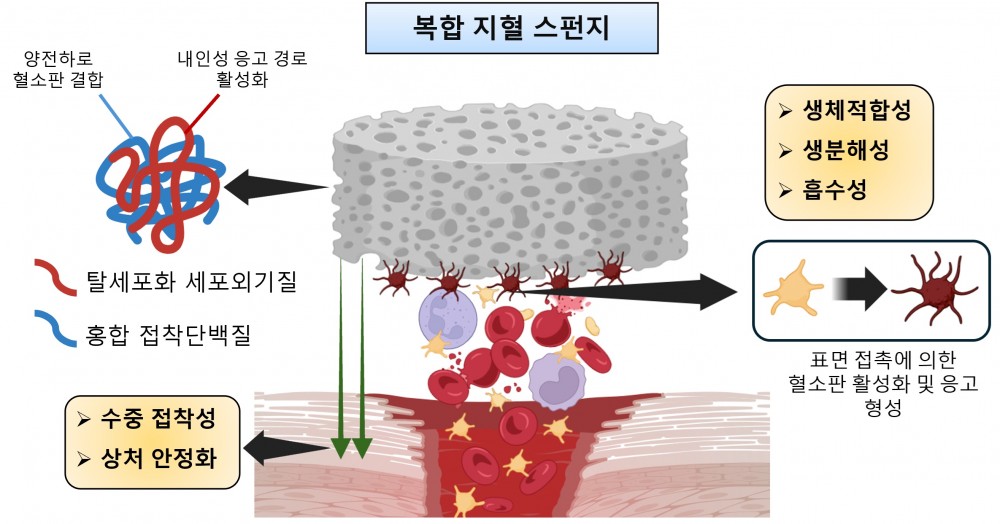
연구
Research Outcome
미래를 창조하는 포스텍 화학공학과
Absorbable Adhesive Composite Hemostatic Sponge Based on Decellularized Extracellular Matrix and Mussel Adhesive Protein for Internal Bleeding Control
- Title of paper
- Absorbable Adhesive Composite Hemostatic Sponge Based on Decellularized Extracellular Matrix and Mussel Adhesive Protein for Internal Bleeding Control
- Author
- [차형준 교수 연구실] 내부 출혈을 위한 탈세포화 세포외기질 및 홍합 접착단백질 기반의 생체흡수성 복합 접착 지혈 스펀지
- Publication in journal
- ADVANCED HEALTHCARE MATERIALS
- Publication date
- 20250903
Abstract
Hemostatic biomaterials for internal applications require strong wet adhesion, reasonable degradability, and supportive biocompatibility for wound healing. However, clinically used topical hemostats such as Surgicel and Avitene may induce hemolysis, inflammation, or leave behind residual debris that impairs healing. Bioinspired materials, including decellularized extracellular matrix (dECM) and mussel adhesive protein (MAP), have emerged as promising alternatives for their hemostatic potential and biocompatibility. Based on the biomimetic properties of dECM and the adhesive functionality of MAP, composite sponges combining both components are developed and evaluated through in vitro and in vivo tests. Among the formulations tested, E50M50 (9.1% w/w dECM and 90.9% w/w MAP) demonstrates the strongest hemostatic performance. This synergy is identified to be primarily associated with the secondary hemostasis phase. E50M50 also exhibits excellent hemocompatibility, cytocompatibility, and a reasonable biodegradability aligned with early wound healing phases. In a warfarin-treated rat liver injury model, E50M50 significantly reduces bleeding time and blood loss compared to clinical controls. Histological analysis further confirms that E50M50 provided superior early healing outcomes than Avitene, with significantly reduced necrosis, fibrosis, and residual debris. These results highlight the potential of ECM-MAP sponges as absorbable, adhesive hemostats for internal bleeding control and early-stage wound stabilization.
DOI: doi.org/10.1002/adhm.202502994
LINK: https://advanced.onlinelibrary.wiley.com/doi/10.1002/adhm.202502994




